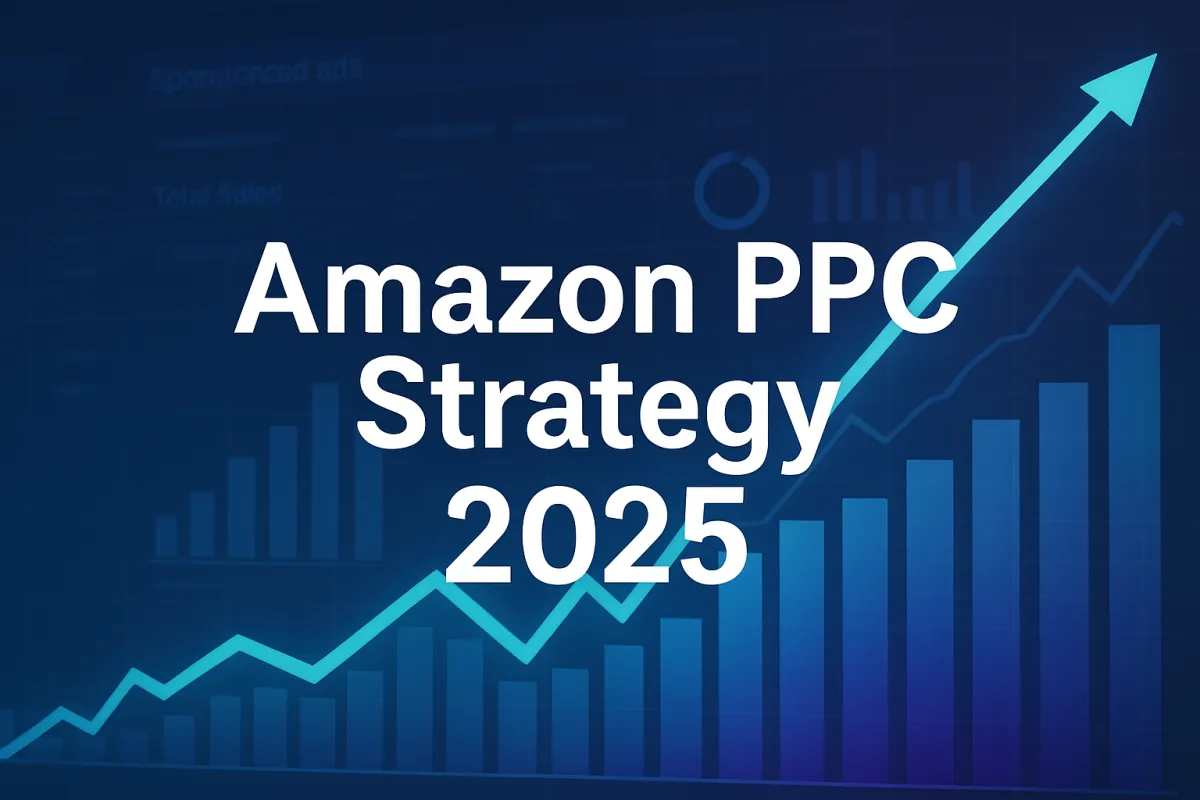
Amazon PPC Strategy in 2025: How to Scale Profitably Without Overspending
1. Rethink “Scaling” — It’s About Efficiency, Not Just Spend
2. Focus on Full-Funnel Campaign Structure
4. Use Dayparting Data to Control Pacing
5. Lean Into Creative Optimization
6. Integrate Organic + Paid Data (TACoS Mindset)
7. Test Incremental Bidding Instead of Blanket Increases
8. Use AMC (Amazon Marketing Cloud) for Smarter Decisions
10. Align PPC Strategy with Lifecycle Goals
Introduction
The Amazon Ads landscape in 2025 looks nothing like it did even two years ago.
Between AI-powered bidding, retail media integrations, and rising CPCs, sellers can’t rely on last year’s playbook.
To scale profitably, you need more than a “set it and forget it” campaign structure — you need precision, pacing, and performance visibility.
In this guide, we’ll walk through how to structure, optimize, and scale your Amazon PPC campaigns sustainably — without overspending.
1. Rethink “Scaling” — It’s About Efficiency, Not Just Spend
Old-school scaling meant increasing budgets and bids.
In 2025, profit-first scaling means focusing on ROAS and TACoS stability as you grow.
The new rule:
Don’t raise spend unless efficiency holds for 14+ days.
Use rolling 14-day TACoS averages to ensure growth isn’t just volume — it’s profitable volume.
2. Focus on Full-Funnel Campaign Structure
Sellers who separate campaigns by intent can scale much faster.

Balance spend:
Top funnel: 20–25%
Mid funnel: 25–30%
Bottom funnel: 45–55%
This keeps your pipeline healthy without overspending on awareness.
3. Automate Smart, Not Blind
Amazon’s algorithmic bidding has evolved — but automation isn’t “set it and forget it.”
Dynamic bidding strategies (2025 best practice):
Start with Dynamic – down only for control
Test Dynamic – up and down once ACOS stabilizes
Layer placement adjustments (+20–40%) only after profitability
Pro Tip: Use automation tools (like Pacvue, Quartile, or Perpetua) for rules-based pacing, not just “auto everything.”
4. Use Dayparting Data to Control Pacing
Amazon still doesn’t offer native ad scheduling for Sponsored Products — but 2025 tools make it easy.
By reviewing hourly data in AMC or third-party dashboards, you can:
Identify hours with high CPCs + low conversion
Lower bids automatically during those times
Preserve budget for evening peak conversions
Example: If spend > 70% by 2 PM → reduce bids by 15% for 2 hours.
5. Lean Into Creative Optimization
Ad creative now drives both CTR and conversion rate — two key inputs for Amazon’s relevancy score.
✅ Test regularly:
Main image variations (zoomed vs lifestyle)
A/B test Sponsored Brand Video thumbnails
Rotate headline hooks every 30 days
Small creative wins can reduce CPCs by 10–20% and compound your ROAS.
6. Integrate Organic + Paid Data (TACoS Mindset)
In 2025, ad performance isn’t isolated — it’s tied to your organic rank health.
Monitor TACoS weekly:
If TACoS ↓ and organic sales ↑, your ads are fueling long-term growth.
If TACoS ↑ with flat organic, your campaigns aren’t creating halo effects — optimize targeting or listings.
Your PPC and SEO teams should share data; they’re two sides of the same profitability coin.
7. Test Incremental Bidding Instead of Blanket Increases
When scaling, avoid doubling budgets overnight. Instead:
Increase by 10–15% every 3–5 days
Track ROAS changes after each bump
This pacing approach lets Amazon’s algorithm re-learn efficiently without volatility.
8. Use AMC (Amazon Marketing Cloud) for Smarter Decisions
AMC insights are no longer optional for advanced advertisers.
Use it to answer questions like:
“Which campaign types drive multi-touch conversions?”
“Do my Sponsored Display views lead to purchases later?”
Apply findings to rebalance budgets toward your highest-value journeys.
9. Don’t Chase Vanity Metrics
Clicks and impressions mean nothing if TACoS rises and profitability drops.
Always optimize for contribution margin, not top-line sales.
Metrics that matter in 2025:
TACoS – overall efficiency
ROAS trend – consistency
Click-to-conversion lag – pacing optimization window
10. Align PPC Strategy with Lifecycle Goals
Your ad approach should match your brand’s maturity:

Revisit your structure every quarter — what worked last year won’t work this one.
Pro Tip: Add a “Profit Layer” Dashboard
Inside your ad reports, include columns for:
Product margin %
Advertising spend %
Contribution profit per SKU
This reveals where scaling actually adds profit instead of masking losses.
Conclusion
The most successful Amazon advertisers in 2025 aren’t spending more — they’re spending smarter.
By focusing on data, pacing, and creative testing, you can scale visibility while protecting profitability.
Remember: growth isn’t just about reach — it’s about efficient reach.
Want Help Scaling Smarter?
At Brand GrowthIQ, we help Amazon brands use data-driven PPC strategies to scale profitably — without wasting ad dollars.
🚀 Book your 2-week free consulting offer and get a custom 2025 scaling roadmap for your account.